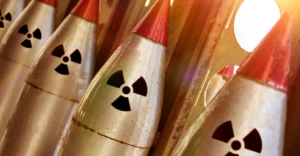
Russia’s reserves depleted in south, part of western Crimea is vulnerable: weekly military results
Today's focus is on the southern offensive, where the Ukrainian forces are approaching Russia’s main line of defense on one of the directions, its discussion in the West, the situation in Bakhmut and Ukraine's operations in Crimea
The Ukrainian offensive in the south: the front is expanding, Russian forces have almost no reserves left
The Ukrainian flag has been raised over Robotyne. But so far there is no clear statement that this village has been liberated, although we can see that Ukrainian troops are controlling it and advancing further south. The Ukrainian General Staff spokesperson Andriy Kovaliov said that the Ukrainian Armed Forces are making progress in two areas: "Novodanyivka - Novoprokopivka" and "Mala Tokmachka - Ocheretuvate". The first direction stretches towards Robotyne and to the south, and the second is the wedge between Robotyne and Verbove. There is a dominant height there, and the Ukrainian Armed Forces are advancing to dislodge Russian forces from this position.
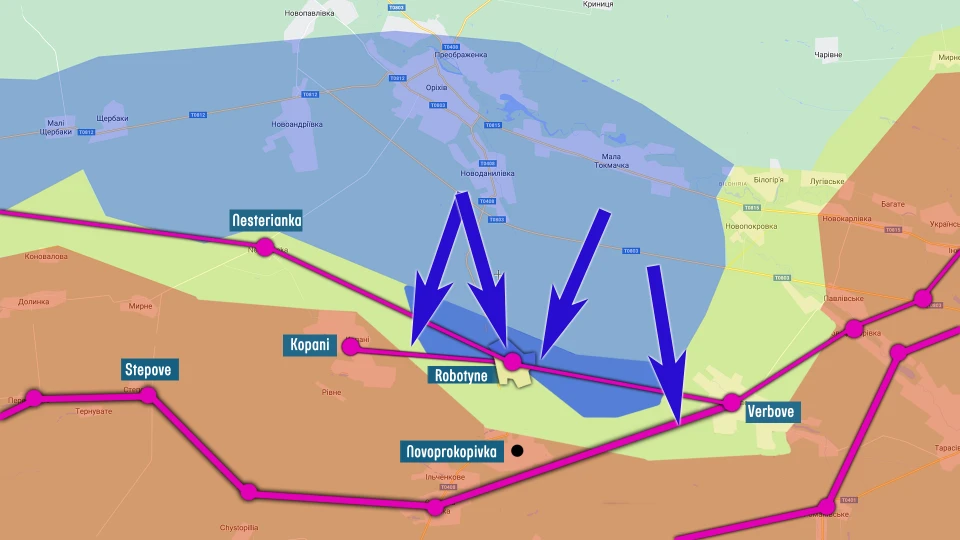
In general, the frontline near Robotyne is expanding, currently stretching across approximately 12 kilometers. This broader front is strategically advantageous, as it aims to minimize the potential for enemy counterattacks. Presently, Ukrainian troops have successfully pushed beyond the initial front line and are advancing towards the main line of defense. This forward momentum spans from Robotyne towards Novoprokopivka and bypasses Verbove. Russian forces are now mobilizing to reinforce their defense line, drawing resources from various directions. While the primary objective from Robotyne is to advance towards Tokmak, a distance of 19 kilometers remains to be covered before overcoming the Russia's main line of defense.
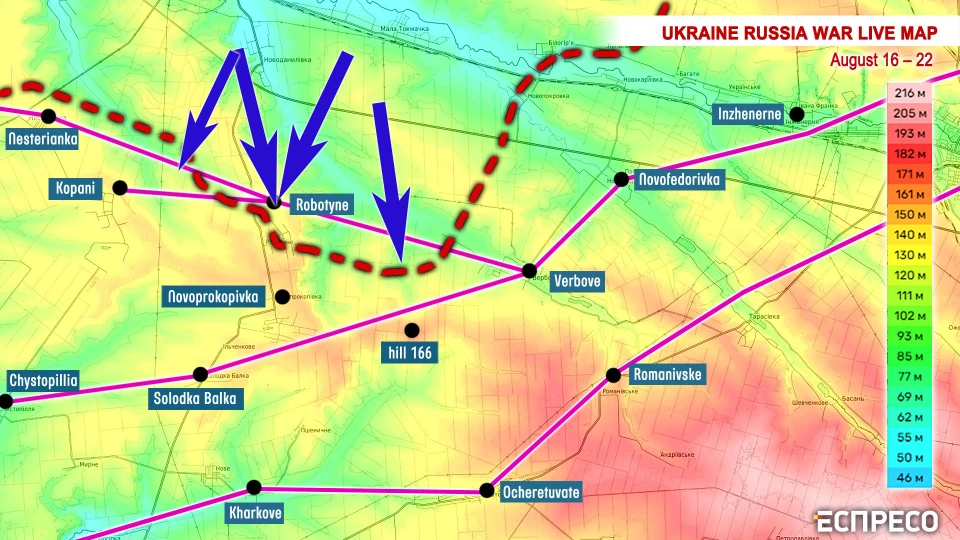
The Ukrainian Armed Forces have set their initial objective on capturing Zavitne Bazhannia along the route connecting Staromayorske and Staromlynivka. Choices are being weighed, such as whether to bypass the village or engage directly. Russian forces maintain strongholds in two pivotal regions: Pryiutne and Kremenchyk, both characterized by dominant heights. Artillery is crucial at this stage, aiming to strategically determine the most effective path of advancement. Progress towards Staromlynivka is of equivalent significance to the advancement towards Novoprokopivka in the Tokmak direction. These two sectors retain paramount importance for Ukrainian Armed Forces, as they strive to exert maximum pressure on the Russian forces. It's worth noting that these are not the exclusive operational zones within the southern front, where Ukrainian troops are active, compelling the enemy to commit dwindling reserves.
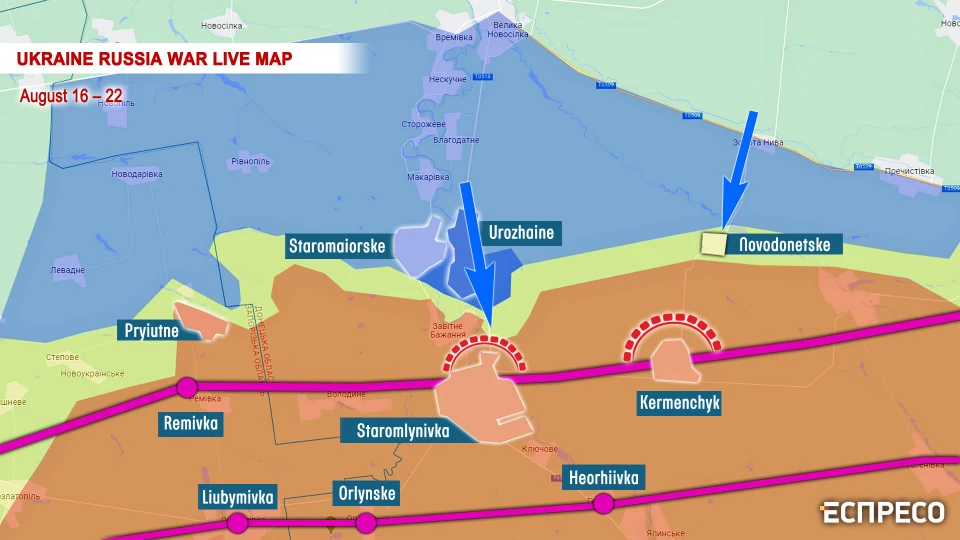
White noise: the real discussion on the counteroffensive is more pragmatic than in the media
On August 24, in a WP article, former CIA chief and commander of the joint forces in Iraq and Afghanistan, General Petraeus wrote that the Ukrainian Defense Forces are acting absolutely correctly and logically. He says that the Ukrainian Armed Forces are exhausting, stretching and beating the enemy. Now, in addition to the two areas we discussed, there are other areas where Ukrainian Armed Forces can operate. Near Huliaipole, near Vuhledar, and near Vasylivka. That's five areas where we can operate and stretch Russian forces, which are mainly held back by two areas - near Robotyne and in the direction of Staromlynivka. General Petraeus says that everything is going according to plan. The operation has lasted for 10 weeks, but he says that it will take another 4 months to create conditions for the complete depletion of Russian forces in the south. And then ensure the use of mobile reserves to break through and ensure advancement towards the Azov Sea.
The discourse regarding partner evaluations of the counteroffensive remains devoid of personalization, resonating within prominent American media outlets. When specific individuals are referenced, they say that the offensive's pace is slightly behind projections, yet Ukraine's chosen strategy remains apt given the current circumstances. This perspective essentially suggests a forward-looking approach, contemplating preparations for the upcoming year – encompassing a fresh strategy for resource accumulation and personnel training, as well as the development of specialized engineering vehicles capable of navigating mined areas. On a practical level, this discussion assumes a more comprehensible and pragmatic demeanor in contrast to the white noise prevailing in foreign press coverage. These dual realities underscore distinct perspectives, and I'm optimistic that pragmatic military leaders on both sides will glean pertinent insights. With unwavering US support, substantial enhancements along the front line are imminent.
Bakhmut: the main task is to get to the railroad in the south
There is progress in the north and south of Bakhmut. The 30th Brigade has effectively displaced Russian forces between Orikhovo-Vasylivka and Zaliznyanske in the north. In the southern region, changes are unfolding, albeit not immediately evident on maps, but the dynamics are significant and quite complicated. The 3rd and 5th separate assault brigades have employed artillery to neutralize Russian offensives employing armored vehicles. Following this, Russian troops abandoned these vehicles and attempted to dislodge Ukrainian positions with infantry, a maneuver that also proved futile. Any presence of enemy armored units is promptly met with their destruction. The guys in the south say Russian forces are using poisonous substances. It is likely that lewisite agents are being deployed, prompting Ukrainian soldiers to don gas masks. Over the past two days, the Russians have also started actively using Lancet UAVs to hunt for Ukrainian armored vehicles. We are using various defenses, including mock-ups, as the Russians can hit a mock-up. The main task in the south is to push the enemy to the railroad. It runs west of Klishchiivka, passes through Andriivka, in the Kurdyumivka area. Russian troops are tasked with standing to the death to prevent the Ukrainian Armed Forces from reaching the railroad, and our troops are using artillery and units to break through.
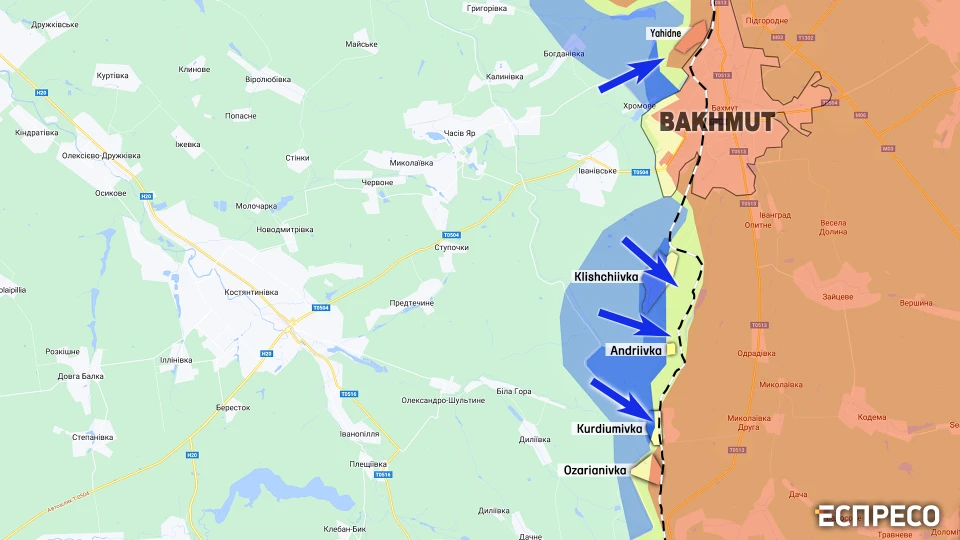
Destruction of S-400: part of western Crimea is now defenseless
As Budanov, Ukraine’s intelligence chief, once promised, we would be in Crimea in the summer and fall. Now he is demonstrating that our troops can land on the peninsula and use the means to hit Russian targets. It is likely that a Neptune missile was used to destroy the S-400 system - there is unconfirmed information about this. If this is true, it indicates a qualitative change in the capabilities of our new weapons. The destruction of this complex makes a large part of western Crimea defenseless, which can be used for other operations. This is what the Defense Intelligence of Ukraine’s special forces demonstrated the day after the S-400 was blown up. Crimea is an object where the enemy cannot be safe at any point. And not only because of missiles and drones, but also because of the actions of the Ukrainian Special Operations Forces and, I think, our partisans.
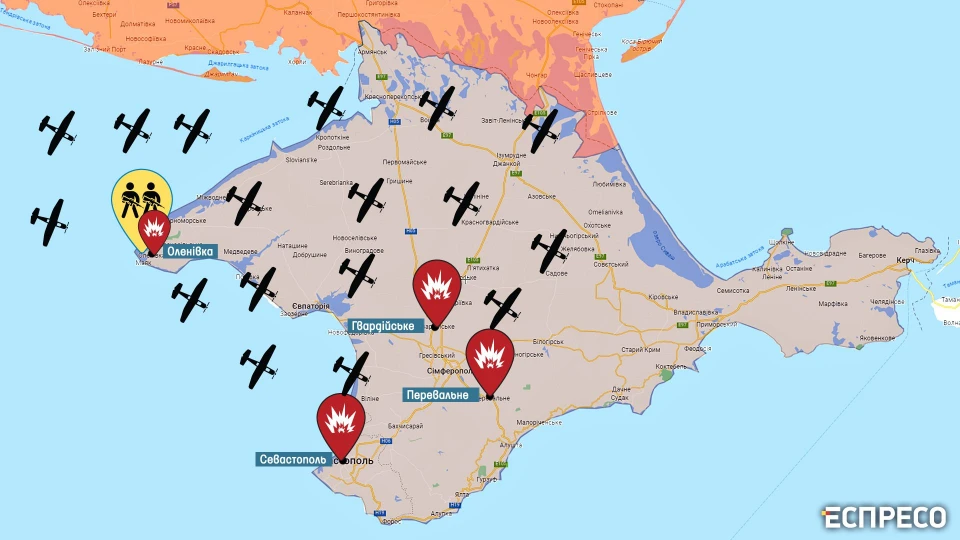
- News






